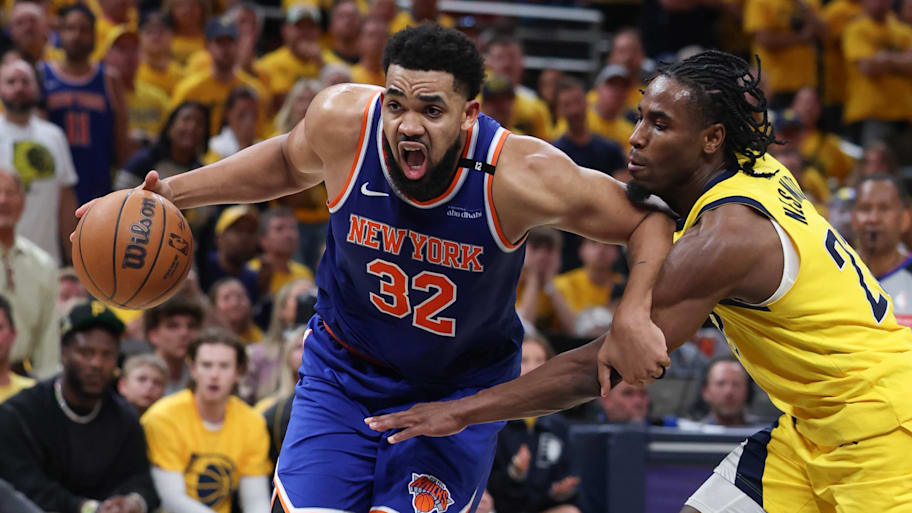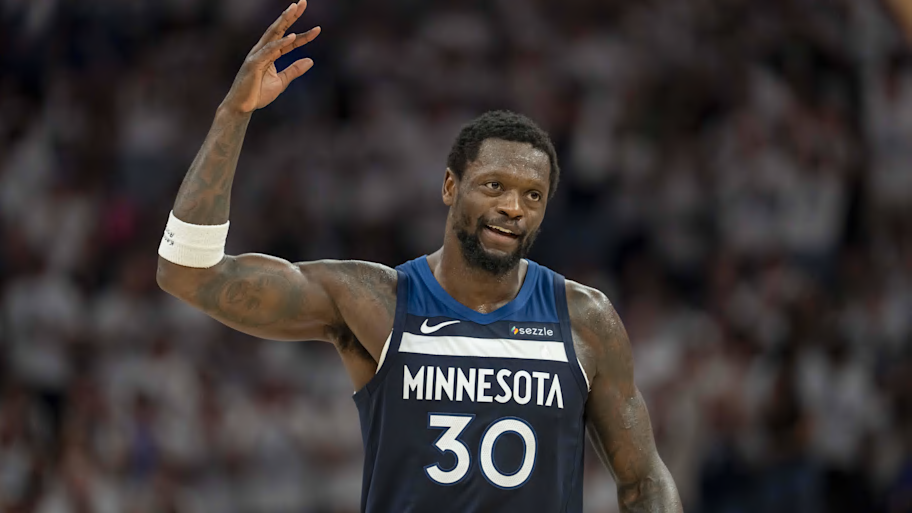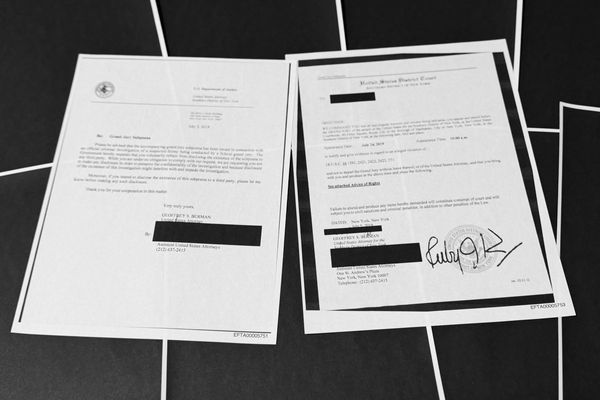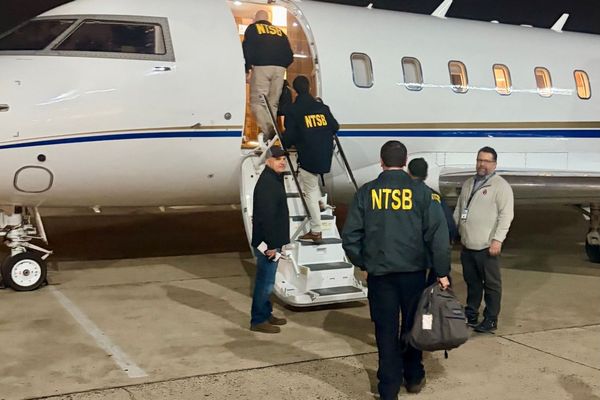
The NBA Finals matchup is set, with the Oklahoma City Thunder and Indiana Pacers ready to clash beginning on Thursday night. In their wake, the two contenders left the Minnesota Timberwolves and New York Knicks, respectively, after taking them down in this year’s conference finals.
The way the two series unfolded made for a stark contrast. Pacers-Knicks was grand theater, kicked off by an incredible Game 1 comeback win from Indiana and an all-time Tyrese Haliburton picture. The play grew sloppier as the Eastern Conference finals went on, but the games stayed largely close and competitive all the way to the last few minutes of Game 6. Thunder-Timberwolves, on the other hand, was a snoozer. OKC annihilated Minnesota in three of the five games (with a two-point victory in Game 4), and the Wolves somehow won by 40 points in the other. The wonder of watching the Thunder meat grinder go to work fades when they go up by 30 points in the first half of an elimination game.
Regardless of all that, the Thunder and Pacers moved on while the Knicks and Timberwolves have some self-examination to do as their offseasons get underway. As we’ve done for each of the previous series this playoffs, here are the lessons learned by the eliminated teams from the conference final round of the NBA postseason.
New York Knicks
Lesson learned: The Jalen Brunson, Karl-Anthony Towns pairing is a playoff problem
The Knicks lost what was definitely a winnable series against the Pacers and that will sting for a long time. That does not mean this season wasn’t broadly successful, nor does it mean the team’s talent has been maximized and has a ceiling below championship contention.
New York pretty much hit every mile marker the organization could have hoped for after overhauling the roster with dramatic trades to acquire Mikal Bridges and Towns last offseason. The Knicks won over 50 games, earned a top-three playoff seed, knocked off the defending champs and came within two games of the NBA Finals. Obviously, a championship would have been the dream ending to the season. But for a team that was only finalized in September and had to fight through growing pains on the fly (with inconsistent, shall we say, bench production to boot) this season’s effort shouldn’t be seen as a failure. It should be seen as a big step forward and a reason to hope the roster has the right combination to compete.
The future is never certain, but the Knicks are as well-positioned as nearly anybody to seriously contend for a title in the near future. Perhaps franchise decision-maker Leon Rose won’t want to sit on his hands and takes an even bigger swing this offseason. But entering next season with a roster consisting of two high-level scorers and two elite wing defenders gives the Knicks a very high floor.
That’s the macro view, anyway. The micro view of how the Knicks fell short reveals several weaknesses contained within the roster beyond variables like hustle and sloppy play that can oscillate from game to game. Most of those weaknesses are minor, to be fixed with small adjustments next season from either the players or coach Tom Thibodeau. But one issue in particular is both significant and hard to solve: Brunson and Towns are a problem sharing the floor in postseason basketball.
It may not come as a shock to hear that considering both have well-documented defensive deficiencies; Brunson tries hard but can’t overcome his slight stature and Towns is … all over the place pretty much all the time while trying to navigate defensive coverages. But the theory (which held true in the regular season) was their combined offensive prowess would offset such problems. As the Knicks marched to 51 wins this season, lineups featuring Brunson and Towns put up a 4.9 net rating in over 1,400 minutes; New York outscored opponents by a total of 181 points.
The script flipped in the playoffs as both ratcheted up their minutes and opposing offenses made it their goal to pick on their particular flaws. Lineups with both stars on the floor resulted in a negative net rating over the course of the 18-game playoff run (-2.9) The Pacers took particular joy in exposing the pair, outscoring New York by 16 when they shared the floor. The 146 minutes they played together in the conference finals led to a -6.9 net rating.
In the postseason, games are won and lost by a team’s best players. The Knicks have two very good ones, but their first playoff run together indicates they’re net negatives when playing together, and there’s no obvious solution in sight. New York found success when splitting the two—PBP stats has Brunson-led lineups with no Towns recording a 3.49 net rating in 187 minutes this postseason, while lineups around Towns with Brunson on the bench resulted in a 9.71 net rating. But obviously neither player is going to get benched and the Knicks’ coach is famous for his overreliance on the starting lineup.
Brunson and Towns give the Knicks one of the highest offensive floors in the NBA. Employing them will ensure New York scores at a great clip pretty much all the time, and in today’s league, a good offense will compensate for poor defenses throughout the regular season. The first go-around with both in the crunch of the playoffs showed the Knicks might have to get creative to cover for their overlapping weaknesses. Most may feel it’s a good problem to have, but it’s a problem nonetheless.
Minnesota Timberwolves
Lesson learned: Julius Randle is a tough evaluation
The Timberwolves had a bit of a roller-coaster playoff run.
They drew the Los Angeles Lakers in the first round, suffered through no small amount of noise about how Luka Doncic and LeBron James were Finals-bound in their first playoff run together, and then put an end to the Lake Show in only five games with overwhelming physicality and size. A worse matchup awaited in the second round in the form of the Golden State Warriors, but Steph Curry’s injury swung the odds massively to Minnesota’s favor and the Wolves wasted no time in moving on to the conference finals. There, they ran into a total buzz saw of a Thunder team and failed to put up much of a fight before going out with a whimper in Game 5’s blowout. The series was more about OKC playing tremendous basketball than the Wolves playing poorly, though, and history won’t look unkindly upon Minnesota’s effort if the Thunder complete one of the great statistical seasons of all time and win the title this month.
It all makes for something of a confusing stew, though. The Wolves didn’t really face much adversity until the Western Conference finals and were almost immediately overwhelmed at that point. Overall it was a positive playoff run in the sense that the roster’s talent level and cohesion is at the point where they can seize advantage of an easy path and make a deep playoff run (not at all a given with that organization). But, obviously, they were not good enough to avoid collapsing once they ran into superior competition. The result is a bitter end to a good season and one that doesn’t lead to one grand conclusion, one big problem the Wolves must fix heading into the following season.
Instead, Minnesota learned just how tough one big decision will be this offseason: what to do with Randle.

Randle was acquired in September in the blockbuster trade involving franchise mainstay Towns. It took both Randle and his teammates a long while to adjust; the three-time All-Star saw his points per game drop from 24.0 last season to 18.7 this season, his first season since 2019–20 that Randle failed to average 20 per game. He was slightly more efficient from the floor but needed pretty much the whole season to learn how to play alongside Anthony Edwards as the Wolves collectively tried to figure out how to navigate the court without Towns’s shooting to space out defenders. The collective talent on the floor allowed Minnesota to do so without losing tons of games; Randle was afforded the luxury of time to mesh his game with his teammates.
Then the playoffs started and he was wonderful. The bowling ball forward averaged 22.6 points per game while shooting 52.9% on twos and 39.3% on threes against the Lakers. Randle was even better against the Warriors despite a steep drop in three-point percentage, averaging 25.2 points per game while hitting over 60% of his tries inside the arc. He was, in essence, everything the Wolves thought they were acquiring when they made the tough decision to move on from Towns: a switchable scoring forward whose physicality helped control the game on both ends. Randle even found his touch as a passer in the opening rounds, posting 5.9 dimes per game leading into the conference finals.
And then the Thunder happened. Whether due to personnel, scheme or just a terrible stretch from Randle himself, he was a shell in the Wolves’ five-game elimination. After being the only Minnesota player to show up in Game 1, Randle was limited to fewer than 10 points in two of the following four games. Despite a flawless Game 3 in the turnover department, he still finished the series with 18. All told, the Timberwolves were outscored by 24 in Randle’s 157 conference finals minutes, and that doesn’t really tell the full story of just how sharply his play downturned going up against OKC’s defense.
It was a dramatic speedrun of the Randle experience. When he’s clicking, he is a tremendous asset, talented and productive enough to be as much as the second-best player on a championship team. When Randle is bad, he’s bad, a total black hole on both ends who doesn’t do much to hide his displeasure at how things are going. It’s not a great bet to believe that’s going to change, either, given this marked Randle’s 11th in the NBA.
The forward has a player option this offseason and the Wolves could end up facing a fork in the road with few clear answers. If Randle opts out, do they go all-out to re-sign him given the cost to bring him to town? Is it worth paying him a big contract for the good times when the bad times are as bad as we saw in the conference finals? Can Minnesota replace his production to the extent opposing defenses don’t double- or triple-team Edwards, which was clearly a viable defensive strategy this past season? Conversely, if Randle does not opt out, do the Wolves stand pat or do they use his contract to make another big change and bring in a more reliable option?
Until the playoffs started, it seemed like the odds slanted toward the Wolves moving on from Randle in some capacity. His inconsistent shooting doesn’t make him a clean fit and he hasn’t proven terribly dedicated to doing the little things when the shot isn’t falling. But for two glorious playoff rounds, Minnesota saw what life was like for Edwards and the rest of the roster when Randle was smashing through defenses in high-leverage situations.There are few easy choices for NBA teams to make in the offseason. Thanks to his playoff showing, the Timberwolves face a rather tricky one with Randle.
This article was originally published on www.si.com as Lessons the Knicks and Timberwolves Learned in NBA Conference Finals Losses.







